|
On August 6, 1777, the day General Nicholas Herkimer took a bullet in his knee at the Battle of Oriskany, a little boy in Co. Wexford, in the southern part of Ireland, had just celebrated his third birthday in style at his family’s estate near Enniscorthy. Of course, young John C. Devereux knew nothing of the revolution raging in a land across the ocean. He couldn’t have foreseen the rebellion that would drive him from his home nor the effect he would have on that far away valley Herkimer fought to set free. Twenty years later, Devereux stepped on to a dock in New York, forced to flee Ireland after his activities on behalf of the United Irishmen were discovered. Only a year later, during the Rebellion of 1798, his family, who stayed to finish the fight, lost all their wealth and even the life of one son, James, at the Battle of Vinegar Hill. But safe in the States, teaching dancing for a living, John made his way from New York through New England to Utica in 1802. There he traded his minuets for merchandise and succeeded beyond his dreams. The supply and demand of selling dry goods and groceries in a booming frontier city, together with his industrious habits, polished manners, and kind generosity brought him $100,000 a year. His surviving brothers joined him in this new nation and in 1814 Nicholas, the youngest, became John’s business partner. Together they built the Devereux Block on the west side of Bagg’s Square in downtown Utica, a grand five-story building with stores on the first floor and offices above. It stood until 1990 when it was razed after a fire. Their neighbors admired their success and asked them for sage advice regarding money. At the time, Utica had no bank but the Devereuxs had a strongbox at the store which they offered as a safe place to keep the coins of Uticans. They kept careful accounts and paid interest to depositors. Then in 1839 they officially formed the Savings Bank of Utica. John served as its first president. And the strongbox survives in the gold dome bank's lobby on Genesee Street to this day. There were other firsts too. John donated the funds to build the first Roman Catholic Church west of Albany - Old St. John’s, still at Bleecker and John Streets today. And he established Utica’s first St. Patrick’s Day parade in 1824, still celebrated on Genesee Street every March. And in 1840, John C. Devereux became the first mayor of Utica elected by the citizens. Up to then, Utica’s mayors had been appointed by the city council. On December 11, 1848, John finished his generous and productive life in the city he served so well. Moses M. Bagg later wrote of him, “...a very prince among his fellows was John C. Devereux whose honourable career and many deeds of charity left behind him a memory as verdant as that of the green isle whence he came."
0 Comments
The city that is Rome, NY, today was nothing but an abandoned fort, a swamp, and a lot of potential when Irish-born Dominick Lynch mapped out his vision for the community in 1796. Over the next 29 years he built up a thriving town he called Lynchville, criss-crossed by streets he named after his friends and family. Those familiar street names include, James, Jasper, Louisa, Ann, John, and Henry (after some of his 13 children), Dominick and Lynch (after himself), and George and Washington (after his friend the Father of our Country). Lynch had the honor of attending George Washington’s inaugural ball in 1789 having become acquainted with him when they were neighbors in New York City.
One of the first Irishmen to arrive in the Mohawk Valley would go on to become one of the richest and most powerful men in colonial America. He was Sir William Johnson. Born in Co. Meath, he traveled to New York in 1737 at the age of 22. His uncle Peter Warren had hired him to lead a band of 12 Irish families to establish a community on his land near present-day Warrensburgh. Quickly Johnson began to build his fortune through the fur trade and land acquisition. In 1755 Johnson distinguished himself at the Battle of Lake George, which earned him the title of Baronet from King George II of England. (This title has passed down to his descendants to this day. The current Baronet of New York lives in London.) But more than his growing wealth or his title, it was his extraordinary ability to communicate with the Native Americans that made him a legend of colonial New York. He learned to speak the Mohawk language, had eight children with his Mohawk wife, and was given a name of honor by the Mohawks - “Warraghiyagey” - which in English means, "a man who undertakes great things". Johnson Hall, his home that still stands in present-day Johnstown, NY, was a place known for generous hospitality with plenty of music and dancing, fine food and drink, a menagerie of pets including dogs, birds, and monkeys, and rooms to accommodate a constant stream of guests. Johnson died from a stroke while speaking at an Indian conference at his home on July 11, 1774. He left an estate of 170,000 acres of land. Just two years later, his heir, Sir John Johnson, lost it all when American patriots seized it during the Revolutionary War. The marks are still visible on the stairway railing where patriot militia members pounded their rifle butts on the day they took the house. Photos taken by Sue Romero at Johnson Hall State Historic Site. The Great American Irish Festival is always a magnificent celebration of culture, music, community, and friendship. And this year was just as epic as ever. Held July 26-28 at the Herkimer County Fairgrounds in Frankfort, NY, it featured 22 bands, a building full of high quality vendors, food and drink galore, heavy games, a 5K race, Irish step dancers, dogs of Ireland, highland pipe bands - and a building full of cultural exhibits and activities which was organized by Craobh Dugan members this year. In this post you'll get a taste of the action, with lots of photos and videos. Several members of our group researched and created display boards for the mini-musem exhibit, covering topics like Irish poets, influential local immigrants from Ireland, Gaelic sports, the Irish workers on the Erie Canal, noble Irish women, and political cartoons that showed some of the fierce prejudice that Irish people had to overcome in the 18th and 19th centuries. 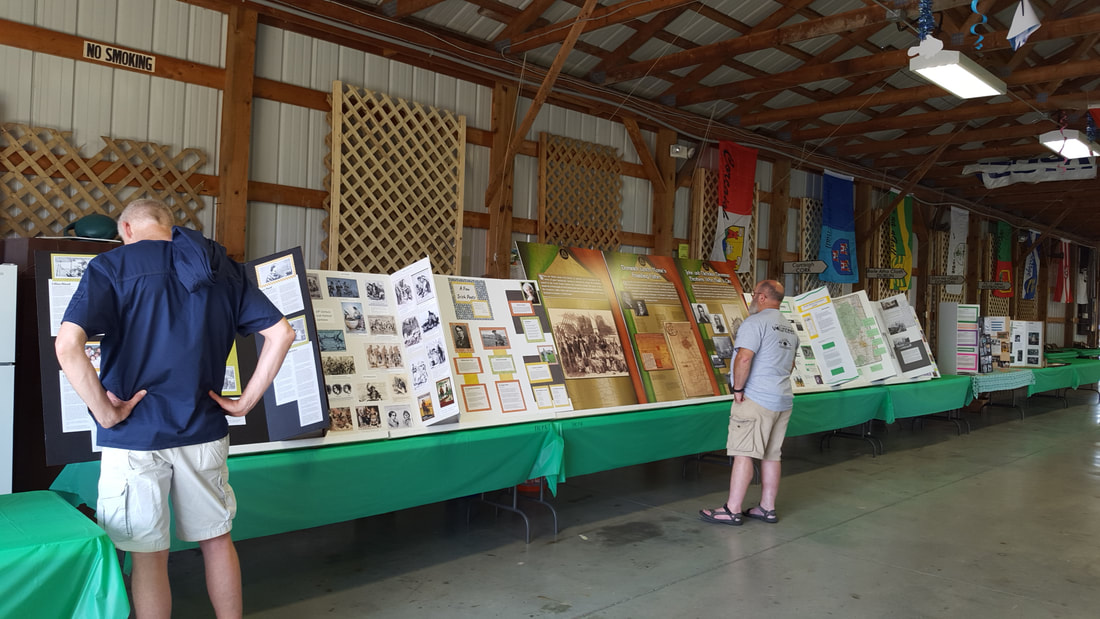 Patty Foley created a display about Irish knitting stitches and demonstrated them to festival visitors. Mike Carroll organized some of his Little Falls Theater friends to perform a traditional medieval mummers' play several times throughout the festival. Naming themselves Mummers Along the Mohawk, they created their costumes and recited their rhyming lines with great theatrical zeal, surprising and amazing all who saw them. Cindy Wood spoke to festival-goers interested in their Irish ancestry, sharing ideas for genealogical research. 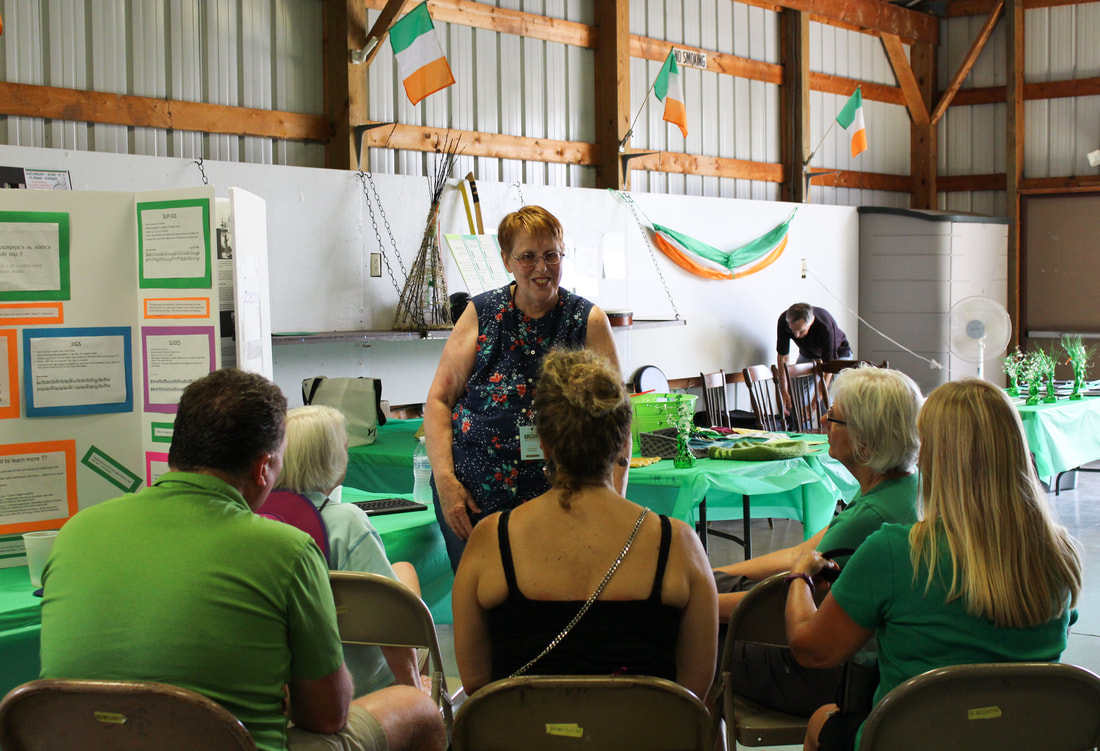 Albany's Two Rivers Gaelic League translated our names into Irish so we could wear them proudly on our own name tags. Connie Pratt, owner of Art and Vine in Utica, led a Paint and Sip session where more than 20 people created lovely pieces of art. One young girl even used her painting as a place to gather autographs from many of the musicians. The open session on Saturday sounded amazing with several professional musicians playing with us this year. With just a simple, "Would you like to join us?" these very busy artists were more than happy to play music with their local fans. Playing in the session were: Rose Baldino of House of Hamill, The Byrne Brothers, and Arise and Go. Have a listen to this small sample: We also tried another kind of session, this one just for drums. Tapping into a little experience with drum circles, Sue Romero led a bodhrán drum circle for about a dozen people. They brought their bodhráns, djembes, and congas and learned about the health benefits of drumming, drum circle rhythms and Irish beats. Jim O'Rourke contributed many things to our festival efforts this year, including this demonstration of how a thatch roof works. A few flash mobs surprised and delighted shoppers in the vendor building thanks to the guidance of Jim O'Rourke and the teachers of Butler-Sheehan Academy of Irish Dance and the Johnston School of Irish Dance. Here's a video of the Johnston School's flash mob on Sunday. Limerick native Deirdre McCarthy with her husband Jim gave a musical and storytelling performance. And then Deirdre taught us some fun sean-nos dance steps. 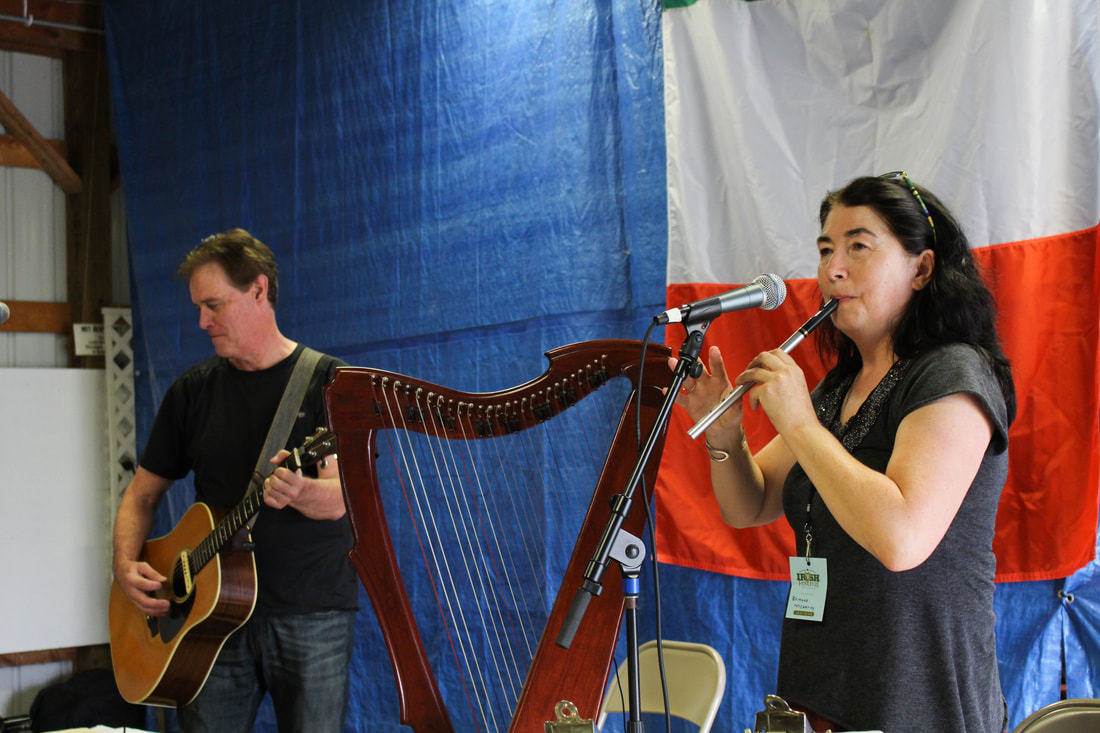 The Cultural Building stage was a busy place. Pictured here, The Mighty Craic performs. Later in the festival Gerry Dixon and Donal O'Shaughnessy also played music and told entertaining stories, and Craobh Dugan performed our Irish and the Erie musical-historical program. We also performed tunes and songs on the Traditional Stage on Sunday. This is a long list of highlights, but there were even more! We had five entries to the photo contest, which was won by Terry Ann DeLude from Utica. Her black and white photo, number 2 in the photo below, received more than 50 votes. And 26 people bravely attempted our challenging trivia quiz. Only one person, Carl Finnerty who traveled from Pennsylvania for the festival, answered all the questions correctly and won the Irish blessing throw donated by Lennon's Irish Shop.
All told, it was a fun and fulfilling weekend made possible only by the collaboration and hard work of our dedicated volunteers and the many more volunteers who make the Great American Irish Festival happen, now for the 16th year. Thanks a million to everyone who pitched in planning, creating, performing, presenting, selling raffle tickets, taking photos and videos, setting up, and cleaning up! It was a weekend where memories were made for us and for hundreds of people who attended.
Imagine you're a local musician who plays for fun and friendship around your hometown area. Now imagine you're invited to bring your instrument and your friends to the newest most beautiful pub in town and play with some of the finest bands in your favorite musical genre. You have CDs by these bands. You've seen them in viral videos and in concert. And now you get to sit down right next to them and make music together.
It seemed like a dream, but it was real for the members of Craobh Dugan on July 25, 2019. It was the eve of the Great American Irish Festival, and the members of The Colin Farrell Band, The Byrne Brothers, and We Banjo 3, arrived at Five Points Public House for an open session and graciously played many of our favorite tunes with us, even though they had traveled long distances that day.
These musicians were fun, friendly, and down-to-earth. They never showed off, but still we were dazzled by their excellent skills. And to experience this magical musical moment in the elegant surroundings of Five Points Public House was the icing on the cake. That was an evening we won't ever forget. Here's a small video sample. The Great American Irish Festival is heading into its 16th year at the end of July and it’s shaping up to be one of the best ones yet. There’s something to do, see, and listen to around every corner, but in this article I’ll focus on the Cultural Building, because for the first time ever, Craobh Dugan is in charge of organizing it. We gathered a creative and ambitious bunch last winter and we’ve been meeting, emailing, and making things ever since. Here are some of the fun and fascinating things you’ll find in the Cultural Building this year:
Ongoing Exhibits The mini museum display boards will return, but even bigger and better this year. We’ve added interesting research about Gaelic sports, Irish poets, Irish tunes and instruments, and Irish people in Mohawk Valley history to the popular topics from last year - notable Irish women, Irish words in the English language, and political cartoons of the 18th and 19th centuries showing the cruel racist attitudes toward the Irish at that time. A trivia quiz with a prize for the winner. A photo contest where you can vote for your favorites with a $100 prize for the winner. And if you have a photo to enter, click this link to see the rules and registration form. The deadline is July 22. A knitting display and hands-on demonstration of Aran and other Irish stitches. Find out how to say and write your name in the Irish language and wear it proudly on your own name tag, presented by Two Rivers Gaelic League from Albany. Professional genealogist Cindy Wood will give a talk and also be available for 30-minute appointments to help you with individual genealogical research. Learn useful words and phrases in Irish at the Pop-up Gaeltacht. Programs on the Schedule Experience a bodhrán drum circle (on Friday evening). Drum circles have become a popular way to relax and relieve stress and lots of people have bodhráns as souvenirs from their trips to Ireland. Why not put the two together and create an Irish drum circle? Bring your bodhrán and tipper (or your djembe, cajon, or congas if you like) and join in this special session just for drummers. We’ll talk about the benefits of drumming in general and a little about the bodhrán. Then we’ll enjoy a relaxing bodhrán beat. We’ll have a few spare drums if you need one. Create your own Celtic masterpiece at the Sip and Paint with Art & Vine (on Saturday afternoon). All art supplies and a drink are included with your $25 ticket. Find out more here. We’ll be performing our Irish and the Erie program about the history of the Irish workers on the Erie Canal with songs and music. Find out more about this project here. The traditional GAIF Open Session returns once again. All local and visiting musicians who play instruments usually associated with Irish traditional music are invited to join in the open session. We’ve also invited members of the professional bands to join us if they wish. So who knows? We may have some famous musicians joining in. Performers in the Cultural Building Along with all the great bands performing on the Contemporary and Traditional Stages (including Craobh Dugan on the Traditional Stage on Sunday at noon) there's even more music to listen to in the Cultural Building. The Mighty Craic, Deirdre and Jim McCarthy, Gerry Dixon, and Donal O'Shaughnessy. And...we have a few secret surprises planned too. We’re not saying what they are, but you will be enchanted. So hop over to the GAIF website for the full Entertainment Schedule, the Cultural Building Schedule and to buy your advance tickets at a discount price. It’s just incredible all the fun that’s packed into that ticket price. A fresh summer breeze plays with the heavy red drapes on the open windows behind the stage at the Oneida Community Mansion House. The curtains billow and dance behind the two musicians, Amanda Straney and Bill Fahy. They’re members of Craobh Dugan who have created an original program called Soldier’s Joy. Amanda takes up her fiddle and Bill his banjo. Without any electronic amplification they play their first tune, Year of Jubilo. The notes fill this large room built in 1862 by members of the Oneida Community, a religious commune with an appreciation for music and art. The walls and ceiling are decorated with paintings of swirling scrolls and the acoustics amplify better than microphones and speakers could.
These tunes of the Civil War era were new when this room was new and I feel myself transported back in time 16 decades. Between tunes and songs, Bill and Amanda tell us stories about music during the Civil War, including quotes gleaned from well over 100 hours of research into letters written by the people who lived through that time. We hear their own voices over the many years from the letters they wrote to the editors of newspapers in Rome and Utica, and personal notes they sent to friends, sweethearts, and relatives. Some found humor in their circumstances. In the summer of 1863, one Oneida 4th soldier stationed in Virginia wrote a letter published in the Rome Sentinel that began, “With all the labor, suffering and anxiety we as soldiers have to endure, we often have our fun, and well and right heartily do we enjoy it.” He went on to relate the story of a young sentry, intent on following orders, who shot a farmer’s pig that failed to respond with the right countersign when challenged. Some wrote heart-wrenching pleas. A member of the 117th New York Volunteers wrote a letter to the Utica Observer begging the residents of Oneida County to aid the wives and children left behind by fighting soldiers as they struggled to survive without their breadwinners. “I ask in the name of all that is good, remember our families at home are in need, in distress. The winter is at hand, or soon will be. Do something for them, for I tell you, my dear sir, on the lonely picket post, in darkest night, our thoughts go home; and oh, the agonizing thought comes to him, "oh, God! what will become of my wife and family?" And many mentioned music and its profound effects in their letters. Before recorded music, most people learned how to play an instrument. Of course they took their skills with them when they went to war. There were more than 600 regimental bands in the Union Army, which they used for communication, movement coordination, entertainment and morale. Music was a part of the soldiers’ daily life and led to many significant moments like the night the Union and Confederate armies were camped on either side of the Rappahannock River after the Battle of Fredericksburg, Virginia. One band began to play Home Sweet Home and then other bands on both sides joined in. Soon men on both sides were moved to shout and cheer and one solider wrote that he thought the war may have ended there if the two sides hadn’t been separated by the river. A member of the 97th New York captured the sounds of the battlefield when he wrote, “As I sit writing about 2 miles in front, the pickets are firing & I hear the bang bang constantly. There goes a cannon Boom. So it goes day and night. As it is toward evening brass bands are filling the air with very sweet music. At almost every head Qtrs. sometimes half a dozen are heard at once. A strange commingling of sounds, last night we could hear the singing & playing from camps …a mile away.” We’re familiar with what the Civil War looked like thanks to the work of early photographers like Matthew Brady, but Bill and Amanda were able to bring to life the sounds of this historic period by reading the words of the people who lived it and by playing the music they listened to. It’s a vivid and touching way to connect with history and appreciate what people lived through and how they felt. Bill and Amanda have upcoming performances of Soldier’s Joy at the Woodgate Library on July 10 and at the Earlville Library on July 17, 2019. You can also check out the Soldier's Joy Facebook page to find out about future presentations, which will, in a few months, include their new programs revealing their ongoing research into the Southern and Irish perspectives on the war.
On May 4, you’ll have a chance to see in concert the son of a legendary Irish musician. But this son is not just coasting on his father’s reputation.
Dónal Clancy surely inherited a talent for music from his father, Liam Clancy, one of the famed Clancy Brothers. But he has earned his own fame as a musician himself. He was a founding member of Danú and a member of Solas. He toured and recorded with Eileen Ivers and was a guest with The Chieftains on their Tears of Stone Tours in Japan and the US.
Radio host and singer/songwriter Archie Fisher said, "Dónal Clancy is a consummate Celtic guitarist with a voice sympathetic to a range of different song cultures and with a sense of musical arrangement true to the great classical Irish tradition." Clancy released his first solo guitar album Close To Home in 2006, which The Boston Globe dubbed "a sweet masterpiece of melodic grace and riveting groove". The Irish Post awarded his next album, Songs of a Roving Blade, five stars, calling it “folk singing at its best” and “a smashing album that should help to ensure these songs will never be lost.” Clancy's latest album, On the Lonesome Plain, features traditional songs and two of his own compositions, A Strike for Victory commemorating the 1916 Easter Rising and an instrumental piece entitled Máirseáil na Conrach. Reviews can help us form an idea of a musician’s sound, but there’s no substitute for hearing it yourself. So, here’s a recent recording of Dónal Clancy singing his original song The Duke’s Line:
Tickets
Clancy will perform at the Rome Art and Community Center on May 4 at 7:30pm. Tickets are $15.00 in advance, $20 at the door, and $12.00 for Craobh Dugan members current in their dues. You can buy tickets on Eventbrite or from Chris Hoke at either of our sessions. Thinking of joining the musicians at one of our sessions? Here are some helpful tips to get you started. Do you dream of playing in an Irish session? Maybe you went to Ireland and spent some happy evenings sipping a pint and listening to a gathering of musicians playing rollicking tunes. Or maybe you’ve watched YouTube videos filmed at sessions. Or you may have caught your excitement for Irish music after hearing Craobh Dugan perform at a local festival. Either way, it sure looks like fun. So how do you get involved in one of our local sessions if you’ve never played in one before?
Instruments The first thing you’d need to do is choose your instrument. If you already have experience playing flute, guitar, or violin from your school days, you have a leg up. These are also instruments accepted at a session, though the style of playing them is different from bands or orchestras. Irish music is known for adopting instruments from many cultures, but there are some that would be frowned upon if they showed up at a session. You wouldn’t want to bring your saxophone, clarinet, trumpet, or trombone. Generally, the instruments associated with Irish music are:
Getting Ready Of course, you’ll need to get familiar with your instrument by practicing at home first. If you’re starting from scratch with a new instrument, there are lots of free videos on YouTube where you can learn the basics and get started with a few Irish tunes. Several people offer online courses for a fee. One of the best of these is The Online Academy of Irish Music where some of the best-known traditional musicians teach. When you’re ready to build your repertoire for playing locally, check out our Tune Book. It’s 180 pages long, but you don’t have to learn them all at once. To get you started, here are a few sets we often play:
Once you can play through a tune, practice it with a recording of a group of musicians. If you’re only used to playing it alone, the first time you play it with a group at a session, you can really get thrown off. You can find recordings on YouTube or CDs, but better yet, you can visit one or more of our sessions and make your own recordings. We’ll be happy to share the titles with you. We have two musician practice sessions each month at members’ homes, where you can get used to playing with others in a safe, welcoming environment without an audience. For this, you’ll need to officially join Comhaltas Ceoltóirí Éireann by paying the annual dues, but that’s very inexpensive and you get lots of other perks for it too. You can find out all about that on our Membership Page. A Few Tips for Your First Session When you come out to a session it’s good to know that each set is made up of three tunes and each tune is played three times before going on to the next tune. If you’re just starting out and only know one or two of the tunes in a set, it’s OK to play along with just the one you know and listen to the rest. If your chosen instrument is a bodhrán, the rule is “one at a time.” Bodhrán players take turns because everyone plays a little differently, and more than one going at once can throw the other musicians out of sync. Someone could join a bodhrán with spoons or bones, but only one of those should be playing at a time too. Also, before you spend time memorizing “When Irish Eyes are Smiling” it helps to know that older, more traditional songs are favored. If you can sing a sean-nós song in the Irish language, you’ll be a rare treasure, but there are many traditional songs in English too. The Session is a good resource for finding songs to learn and recommendations of recordings to learn them from. Remember, you don’t have to learn everything at once. Part of the fun is enjoying the journey of learning with friends. So come out to a session, even just to listen at first. Feel free to ask questions. We love to share what we know about Irish music. We’re looking forward to seeing you at one of our sessions soon. Check our calendar page for times, dates, locations, etc. They started with Johnny Allen's Reel and the tunes rolled on from there for a very generous two and a half hours. In between sets, Jerry and Damien filled us in on the history of the music with colorful stories about musical characters back in Ireland. Jerry explained how he uses one elbow to pump air from the bellows to fill the bag under his other elbow. Hence the name: uilleann pipes which translates to "elbow" pipes in English. He said air blown through the player's mouth would be too moist and destroy the reeds in the chanter and pipes. Damien told us that the inside of his accordion is constructed like three harmonicas, one tuned to pitch while one of the others is slightly flat and the other slightly sharp. The bellows force air through the keys which release the notes. At one point Damien played a tune he composed for his wife Sally. It's called Sally Gally and interestingly it's become quite a hit in Japan. A group of Japanese musicians even made a wonderful music video of the tune which you can see here. We want to send out a huge thank you to everyone who was able to come out for this fine house concert and hope even more of you will be able to join us for future ones. Meanwhile, here's a sample of the concert and you can see two more videos on our YouTube Channel here and here. More Photos from the House Concert Every year in October, Craobh Dugan members gather to eat, drink, dance, play music, and be generally merry. And we manage to squeeze a meeting in there too. Looking back over last year, we had some wonderful successes to celebrate:
And looking ahead to the coming year we have some new projects in the works.
And before adjourning the meeting and beginning the music, we took a moment to remember our dear members who passed away this year. Both Jim O'Looney and Carl Sturtevant were long-time Craobh Dugan members and served generously as chairmen of the branch. Contact us with your:
Our musical historical program The Irish and the Erie has taken us to many places around Central New York that we may not have seen otherwise. It’s been fun to explore some of the wonderful museums and libraries in our area and in August we found a beautiful garden that you may want to visit next time you’re anywhere near Waterville.
The Waterville Public Library is in a lovely building built in 2006, and if you walk around behind it in the summer you’ll find a garden full of flowers and benches where you can take in the view over the fields and distant forest. There’s even an observatory near the garden where the library and the Mohawk Valley Astronomical Society host stargazing events. We hope you get to check it out sometime. You know Mike Carroll as our singer, flute, and tin whistle player extraordinaire, but he’s also a surveyor for the New York State Department of Environmental Conservation. He gets to spend many of his work days out in the woods and meadows of Upstate NY measuring and singing.
Well, one day in August he and his assistant Alina, found themselves working along the old Erie Canal near Oriskany. Suddenly, a metal detector Alina was using signaled that an object was under the dirt in a wet area near the boundary. When they investigated, it turned out to be an artifact significant to our new CD and program - The Irish and the Erie. We all know the song that goes “I had a mule. Her name was Sal. Fifteen miles on the Erie Canal…” Right now you’re probably picturing a mule plodding along the towpath pulling a canal boat, and it’s not surprising that many of them threw a shoe from time to time. The metal object that Mike and Alina found may have been one of those shoes. Since Alina has a horse, she showed a picture of the rusting shoe to her farrier who said it was the right size and shape to fit a mule’s hoof. There’s no way of carbon dating the shoe. That only works for organic matter. But it was in the right place to fit the story, and we can imagine it was once worn by a mule led by an Irish hoggee along the old Erie Canal. Many of our newsletter readers and Facebook fans are historians and professors. What do you think of the mule shoe’s history? The English word "galore" comes from the Irish "go leor" which means "enough". And by all accounts there sure was more than enough to do at this year's Great American Irish Festival, affectionately known as the GAIF.
The 15th annual GAIF brought out thousands to celebrate Irish culture July 27-28 at the Herkimer County Fairgrounds. And many Craobh Dugan members were on hand to contribute to the festivities with music, dance, language, and history. The Cultural Cottage, part of the Cultural Building this year, acted as a mini museum crafted by Craobh Dugan members with the help of some friends. They put together displays teaching festival goers about the Irish language, history, musical instruments and Gaelic sports. Eight-year-old Mackensie Griffin researched and created a display about the horses of Ireland. And Mike Carroll gave a musical talk about the history of the Irish in song. Representatives from Two Rivers Gaelic League in Albany were also on hand to translate festival visitors’ names into Irish. And Cindy Wood spoke about tracing Irish ancestry through genealogy. Though Craobh Dugan musicians have performed at all of the GAIFs, this year we played on the Traditional Stage for the first time. Our dancers in full costume demonstrated ceili dances like the Haymaker’s Jig and the Walls of Limerick. Later the dancers gave festival goers a chance to try out the dances themselves over at the Cultural Cottage. Finally, on Saturday evening, Craobh Dugan members offered an Open Session inviting anyone who plays a traditional Irish instrument to join in. This gave us a chance to meet Anton, a singer and guitar player from Australia, who was traveling through the area and found out about the festival online. The GAIF hosted 16 excellent bands with some of the best performers in Celtic music today. Though long time favorites The Elders bid farewell to the GAIF as they are disbanding after this year’s tour, new bands like We Banjo 3 and 1916 made their first appearance. Plenty of food trucks were on hand along with beer and wine tents. Special events like whiskey tasting, comedy acts, and an artistic sip ‘n’ paint gave people even more to do along with the annual massed pipe band march and competition, the state championship highland games, and the 5K Ranger Run. Wow! There’s always a lot going on at the GAIF! On Sunday Craobh Dugan musicians provided music for the Irish Mass held at St. Joseph and St. Patrick Catholic Church in Utica. Deirdre and Jim McCarthy continued the tradition of singing the Our Father in Gaelic and the Mass was offered for our late founder Jim O’Looney and Matt Sullivan, the founder of the GAIF who also passed away recently. Here’s a gallery of photos featuring Craobh Dugan’s activities at the the GAIF. For more photos and lots of videos of the festival check out the GAIF Facebook Page. On June 25, 2018, Craobh Dugan bid farewell to our beloved co-founder, Jim O’Looney, at a beautiful funeral Mass at Historic Old St. John’s Catholic Church in Utica. To the sweetly somber notes of the highland pipes played by Michael Roddy on the church steps, Jim’s loving wife, his seven children and their spouses, his 12 grandchildren, and his many friends gathered to celebrate the full and generous life Jim lived. In 2005 Jim preserved the story of his life in an autobiography called A Time to Reflect. The section that stayed longest in my memory is the story of how he met Diana, an American teacher on vacation in Ireland. Chapter 11 begins, “On the evening of August 26, 1954, my life was about to change in a wonderful way.” At the time, Jim was playing accordion with the Lough Lein Ceili Band at the International Hotel in Killarney. And that night Di and her friend decided to stop in and check out some local music. After the show, they lingered to chat with the musicians and that’s when Jim noticed something special about Di. The next day by a romantic stroke of serendipity, they happened to meet along the road to Muckross House and Gardens as they were riding bikes in opposite directions. They spent the rest of the day getting to know more about each other as they wandered through the beautiful gardens. Before the end of the day, Jim and Di knew they were in love. Diana soon canceled her return ticket to the United States and after staying with friends of Jim’s for a few months, getting to know his family, and returning home to Utica for a few months, Di returned to Killarney just three days before the wedding. Jim and Diana were married at St. Mary’s Cathedral in Killarney on June 30, 1955, and celebrated their reception at the hotel where they had met. Now, 63 years later, we had gathered to celebrate the love story that continued and grew throughout Jim’s life. He loved his wife Diana, and said so daily as his son Michael told us in his eulogy. He loved his seven children, Mary, Katie, Siobhan, Nora, Ellen, Michael, and Roisin, and all of their families. He loved his home country of Ireland and his adopted country of the USA becoming an American citizen in 1986. He loved Utica, his hometown for over 50 years, and made many contributions there to the Observer-Dispatch newspaper as a printer and a process camera operator and as a professor in the Advertising Design and Production program at Mohawk Valley Community College. He loved music, helping to found our local branch of Comhaltas Ceoltóirí Éireann Craobh Dugan in 1978. And he loved life.
As his daughter Mary said, “My father was a doer.” This is evident from the many honors he received, including induction into the MVCC Hall of Fame and the CCE Northeast Region Hall of Fame. He received the Spirit of Ireland award at the Great American Irish Festival in 2008 and served as Grand Marshal for the Utica St. Patrick’s Day Parade in 2009. Jim's musical idol was Scottish accordionist Sir Jimmy Shand, whose influence could be seen in Jim's waltz styling. Jim once had the honor of meeting Sir Jimmy and was paid a very high compliment by the elder Shand saying to Jim, "You have nice touch on that accordion." A week before Jim died, Diana called Chris and Mike Hoke, the current leaders of Craobh Dugan, and asked them to gather a few musicians to come over. “He seemed so weak, I thought he would die that night,” Chris said. But as they began to play the ancient and familiar tunes Jim had loved since his childhood in County Kerry, he gathered strength. He asked for his accordion. His fingers moved over the keys and the lovely sad melodies of his favorite waltzes filled the room. Then a few days later at 9:00 am on June 21, the first day of summer, Jim peacefully passed away at the age of 86. After seeing the obituary on the Craobh Dugan Facebook page, many people commented about Jim’s kindness and generosity to them. At the calling hours and at the funeral reception it was the same. Everyone spoke of the happy times at gatherings in the O’Looney’s house on Springate Street in Utica after the Boilermaker Road Race, the St. Patrick’s Day Parade, and the weekly Irish music practice sessions. Jim always wore a friendly smile and was ever ready to help. He even cared for a neighbor’s dog after the man passed away. Jim’s life was indeed a love story, and one that will live on through the book he wrote, the CD where his accordion music is recorded, his beautiful family and the Irish cultural organization he founded. He was the kind of soul we don’t encounter often in this world. Kind, gentle, generous and refined. As his son Michael said, “He was the perfect example of a life well lived.” Ar dheis Dé go raibh a anam. A merry band of pub crawlers dressed in bright green T-shirts could be seen making their way from pub to pub on Varick Street in Utica, NY, on June 16. Joining James Joyce fans around the world that day, we had gathered to retrace (in a metaphorical way) the path of Joyce’s fictional character Leopold Bloom just as he strolled the streets of Dublin in the novel Ulysses. The Utica Bloomsday Pub Crawl included stops at four pubs and the Irish Cultural Center of the Mohawk Valley, which is under construction. Our group of about 60 started out at Utica Brews Cafe where we received our shirts and goodie bags containing round wire-frame glasses, much like the ones James Joyce used to wear, as well as candies and our passports which would serve as our program for the day and our door prize tickets. Then we were off to Saranac Brewery’s 1888 Tavern where Mark Sisti put the pub crawl into context for us with a bit of history about James Joyce, Ulysses, and the tradition of Bloomsday pub crawls. The musicians of our own Craobh Dugan set the mood with traditional Irish tunes, and a group of costumed Craobh Dugan dancers performed traditional steps. The musicians and dancers travelled along with us performing at each of the stops. After that we stopped at Nail Creek Pub and and enjoyed the sunny day out on the porch while we heard Herkimer College professor Matt Powers give a rousing reading from Ulysses. Powers is director of the Little Falls Theater (LiFT) and founder of a new dramatic podcast called The Brass Lantern. Next we were off to see the amazing progress that’s been made on the Irish Cultural Center. Last year, we saw steel framing and samples of the stone that would be used to cover its outside walls. This year we were able to walk upstairs where we saw the rooms taking shape and the many windows installed allowing plenty of light into the very generous amount of space that will soon be home to Irish cultural events. The stone now covers most of the outside of the building. The center’s owner and developer Vaughn Lang joined us there in a champagne toast. Then we gathered at Lukin’s Brick Oven Pizza. Its stylish industrial design served as a pleasant backdrop to poet Tom Townsley’s reading from Ulysses. Tom, who teaches English at Mohawk Valley Community College, has recently published a book of poetry called Night Class for Insomniacs. Finally we made our way over to the Celtic Harp Irish Pub where we heard the multi-talented actor, writer, musician, and teacher Ann Carey give a spine-tingling performance of the final reading of the day: Molly’s Soliloquy. Several members of the pub crawl won delightful door prizes, and everyone said they had a wonderful time and are looking forward to the third annual Utica Bloomsday Pub Crawl. We would like to thank our many generous donors who helped make the day such a grand success! The pubs who provided the venues, food, and donated door prizes.
Utica Brews Cafe & Pub Saranac Brewery Nail Creek Pub & Brewery Irish Cultural Center of the Mohawk Valley Lukin's Brick Oven Pizza The Celtic Harp Irish Pub & Restaurant Other door prize donors: The Great American Irish Festival University of California Press The Blarney Rebel Band For filling the day with music and for door prizes: Craobh Dugan For the cool James Joyce eye glasses: Wilcor For the portable amplifier and mic: Big Apple Music For the T-shirt and passport designs and event promotion: Green Pencil Content
Stockdale's Bar and Grill in Oriskany was filled to capacity with Irish music fans on April 17, 2018. They came out to feast upon Rueben burgers, wet their whistles with ales and ciders and hear Craobh Dugan musicians play a few tunes from our new CD, The Irish and The Erie. It was a great evening with lots of toe tapping and singing along.
We'd like to thank everyone who came out to celebrate with us, buy our CDs, and generally support us! You guys are awesome! If you weren't able to make it to the party, you can still buy a CD easily on our CD Baby page. Just click the button below. Craobh Dugan members, together with friends old and new, spent a delightful afternoon at our most recent house concert on Oct. 15 with Caitlín Nic Gabhann and Ciarán Ó Maonaigh. This adorable married duo are not only abundantly talented in music and dance but charming and friendly too. Caitlín's fingers dance over the concertina as nimbly as her feet tap over the floor. And Ciarán's brilliant fiddle playing completes their amazing traditional Irish sound. Between tunes, they each took turns telling funny and touching stories. Some stories about Caitlín's great aunt Peg Pierce gave us an up close picture of the experience of an Irish immigrant to the United States. Peg, who lived to be more than 100, left her little town in Ireland when she was only 16. It was high adventure and lots of dancing on the ocean crossing, followed by a train trip all the way to San Francisco. She never changed her socks the whole time! When she arrived in California her relatives had to soak them off her feet. This one and lots of other tales gave us a glimpse of what our own ancestors' voyages may have been like. Many of our members turned out for this show, but it was especially wonderful to see so many new faces. One young couple were passing through Utica on vacation, saw our listing on Eventbrite.com, and decided to check out the house concert. They said they were very glad they did. During the intermission and after the show everyone nibbled Chris Hoke's legendary blonde brownies, sipped cider, and met new friends. And that is what an Irish "house concert" is all about. Traveling musicians stop by and play for a small group of people in a cozy setting. This time Turning Point Church in Utica provided the perfect intimate space. But at other times it could be at someone's house. Live music, a social atmosphere with friendly company, and a chance to chat with the musicians all work together to create an experience much different from a large venue concert or recorded show. Craobh Dugan tries to arrange house concerts whenever we hear of musicians passing through the area on Northeast tours. So, if you'd like to hear about our next one, like our Facebook page. Many thanks to Deb Putnam for the photos! Videos by Sue Romero.
Find out how our ancestors picked up the nickname "Wild Irish". Chuckle at the lyrics of a song about whiskey. Tap your toe to plenty of rollicking traditional tunes. And learn a little something about how Irish immigrants helped to build one of the most influential engineering projects in American history. You'll come away with all this and more when you attend Craobh Dugan's original program The Irish and the Erie. It was researched and written by our own Mike Hoke, who also plays fiddle and sings with Bill Fahy, Ed Campbell, Mike Carroll, Skip Mansur, and Sue Romero in the one-hour show. Bill Fahy also sings a charming original song of his own about the misadventures of a hoggee who spent a summer walking from Albany to Buffalo. You can find the dates and times of performances already scheduled on our Calendar page. And if you'd like us to present the show at your meeting, museum or other venue, send us a message on our Contact page. UPDATE |
AuthorThe Craobh Dugan-O'Looney blog is written by Sue Smith Romero. Questions? Corrections? Send them on to her at [email protected] Categories
All
|
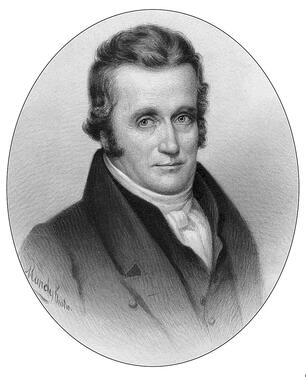
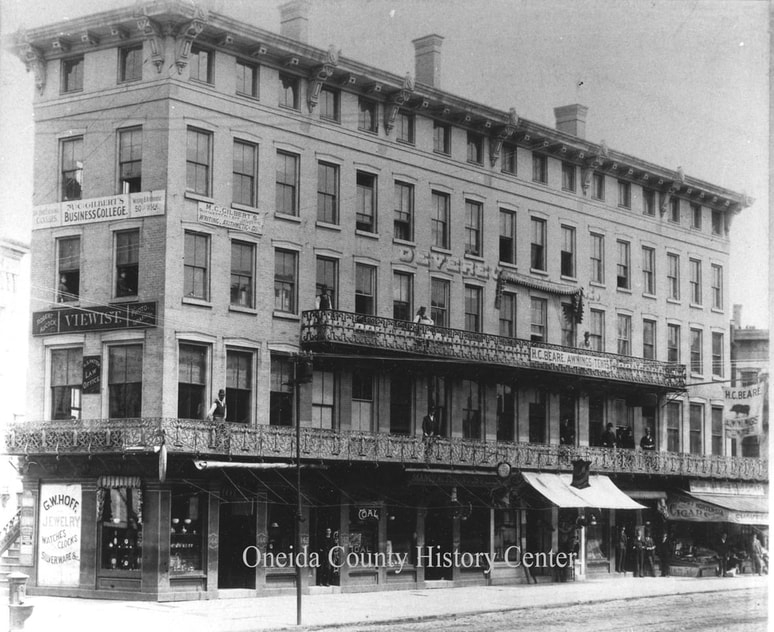
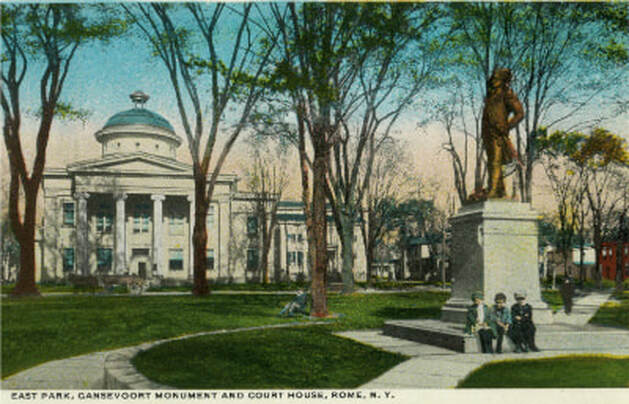
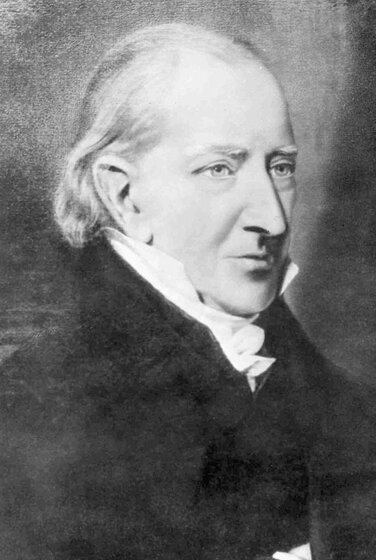
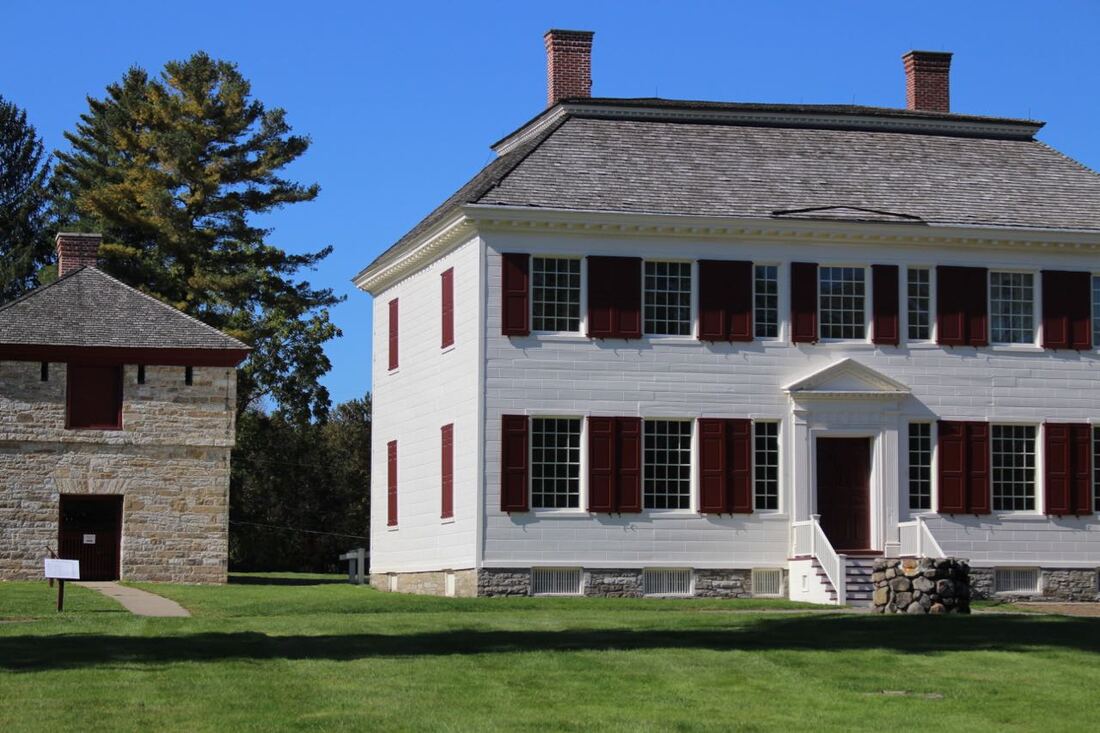
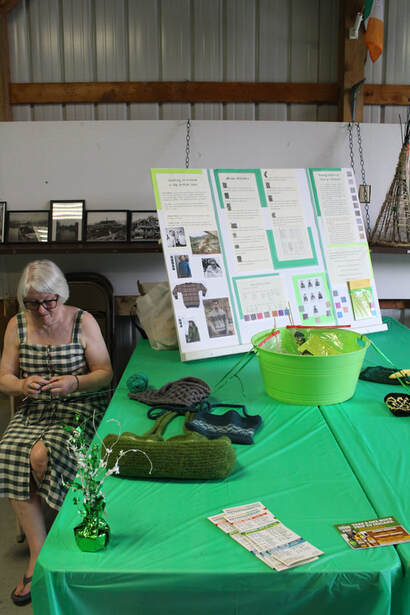
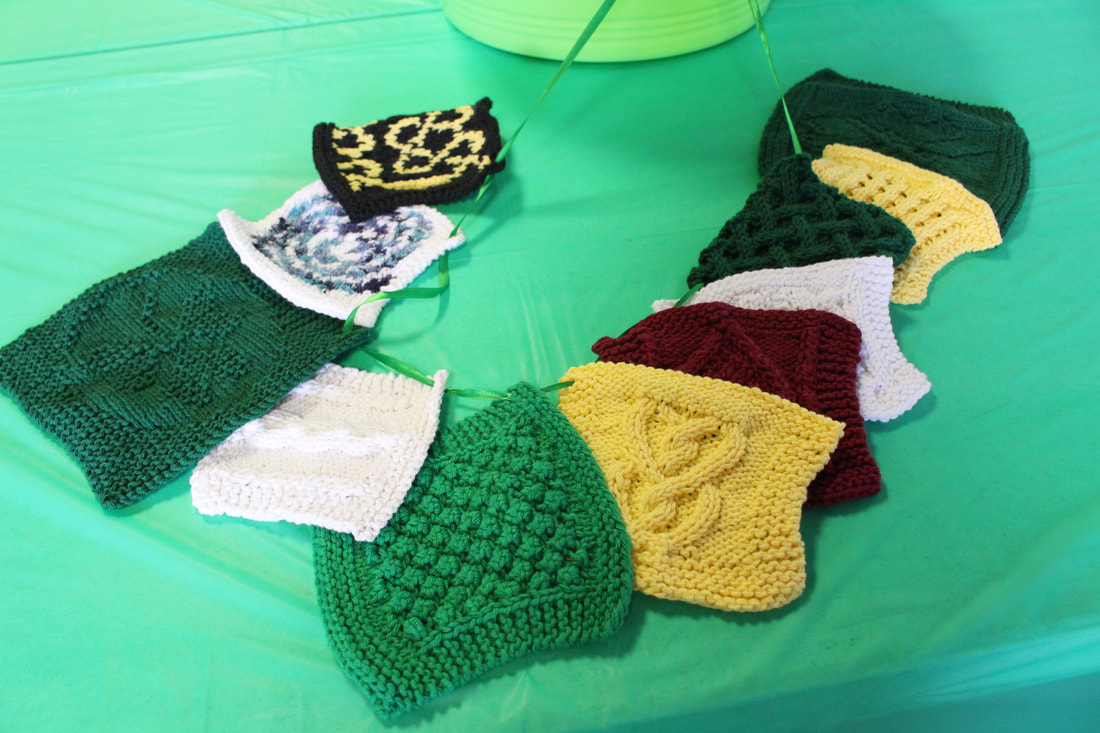
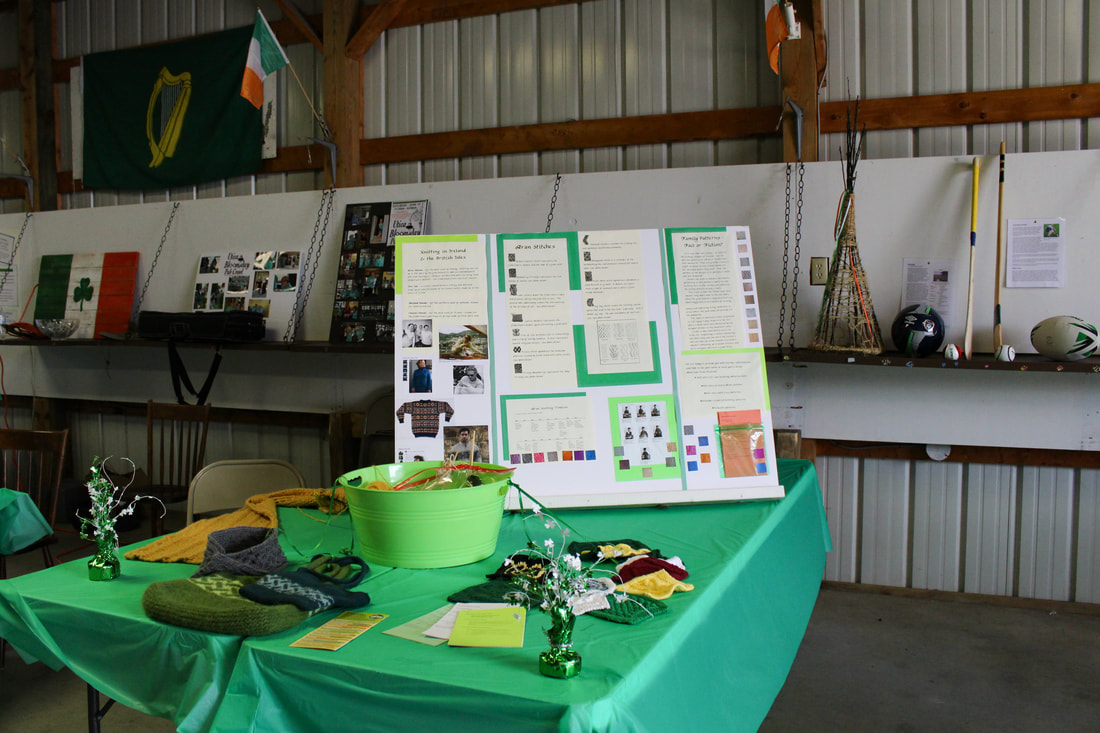
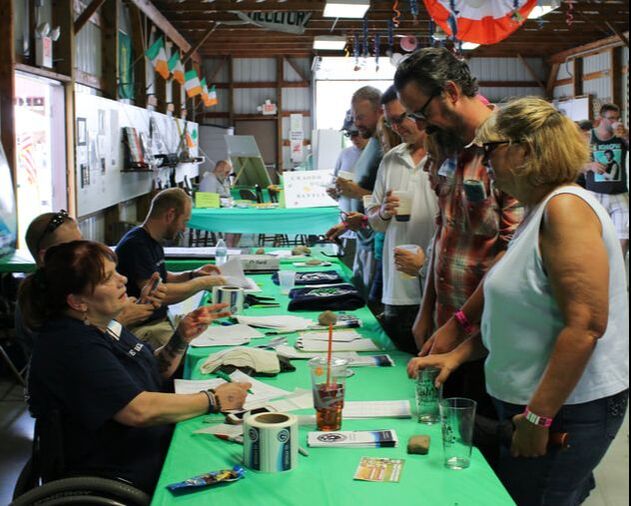
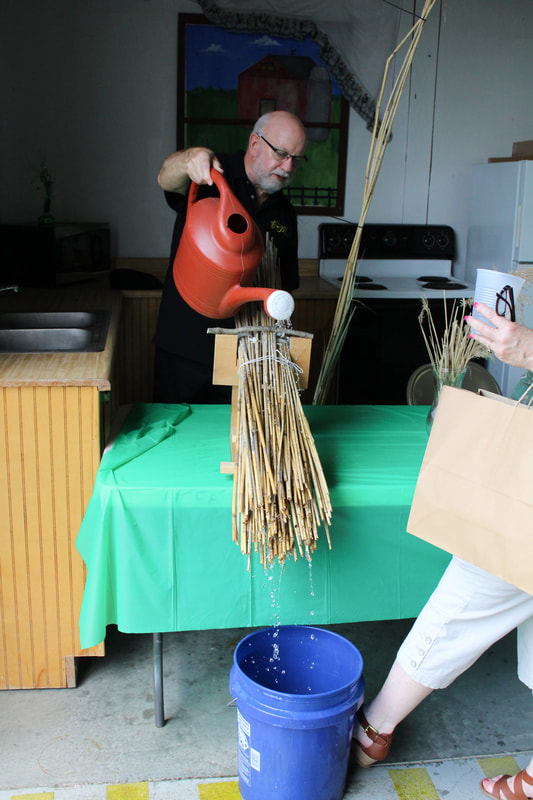
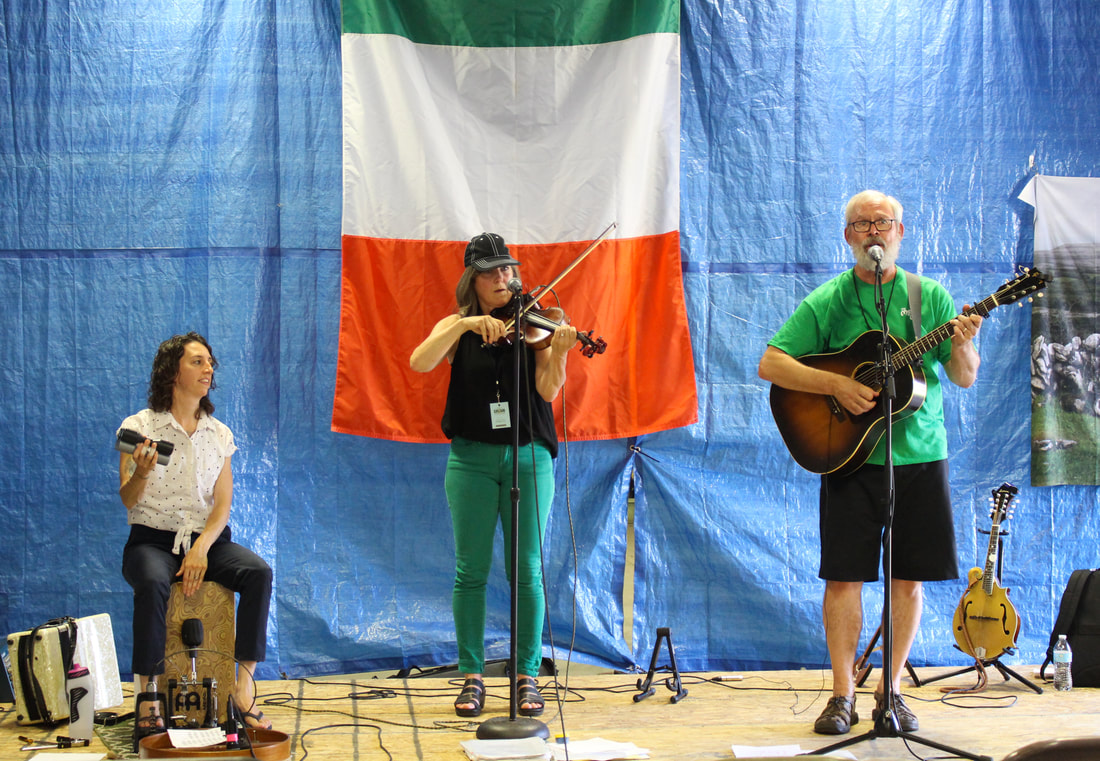
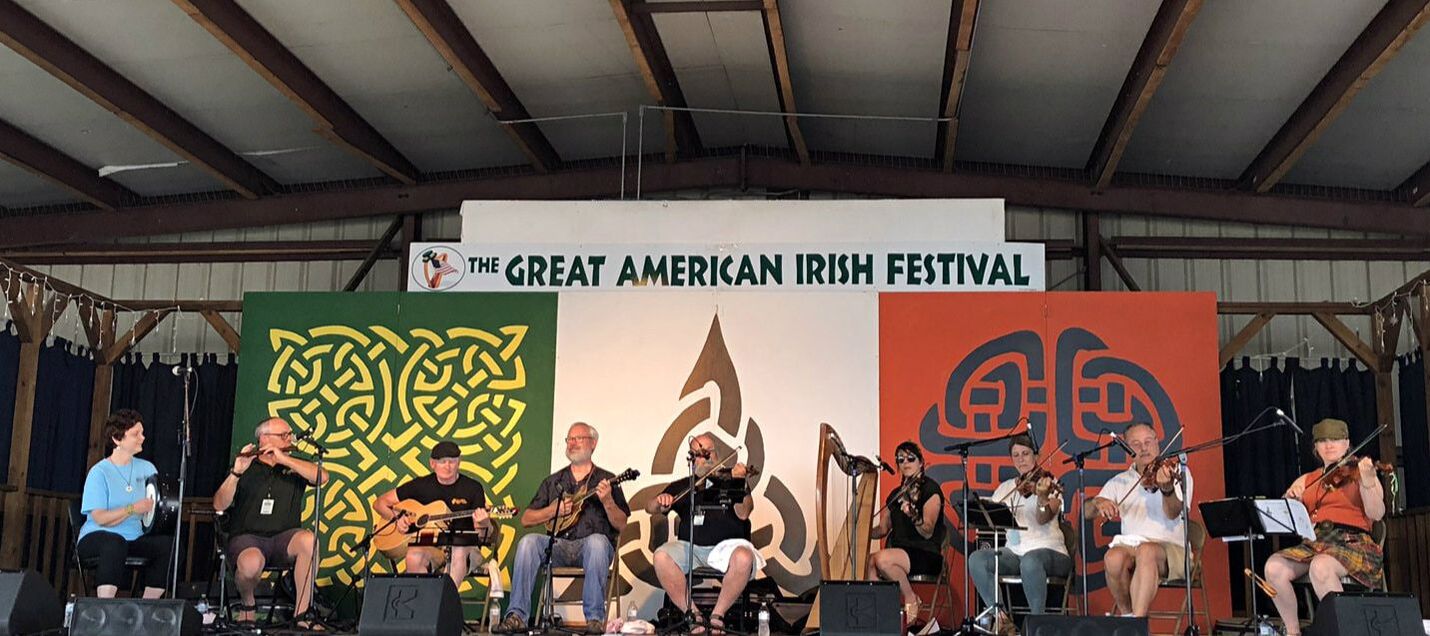
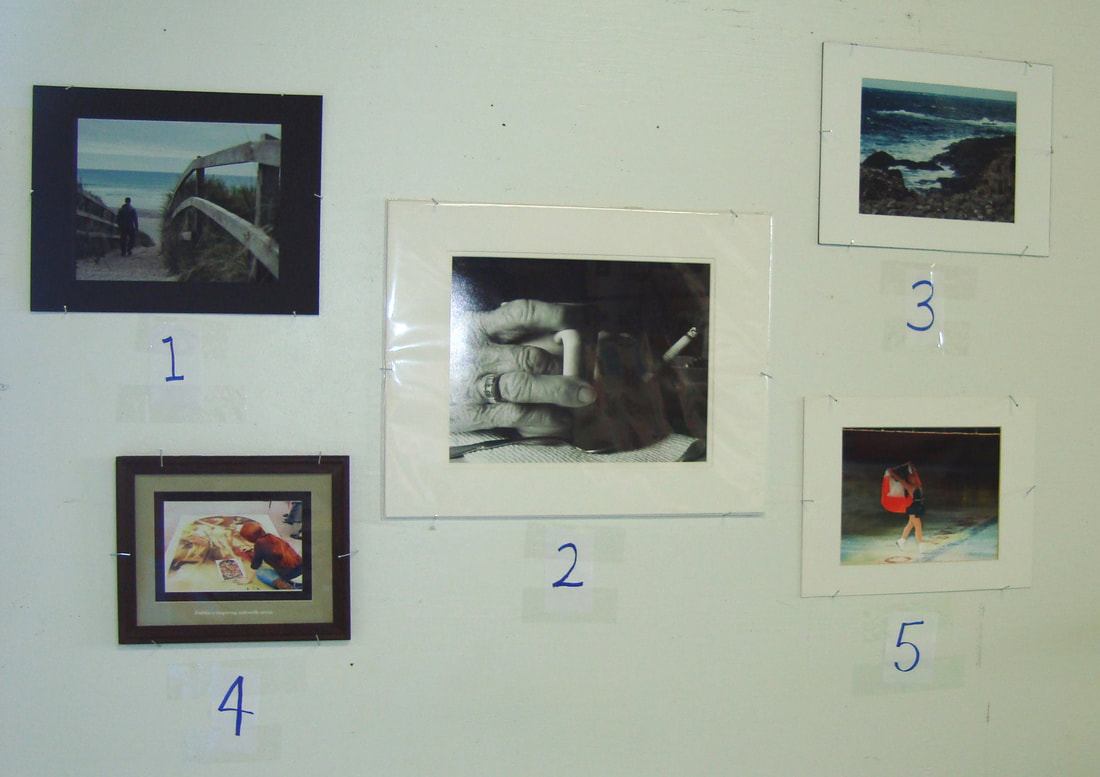
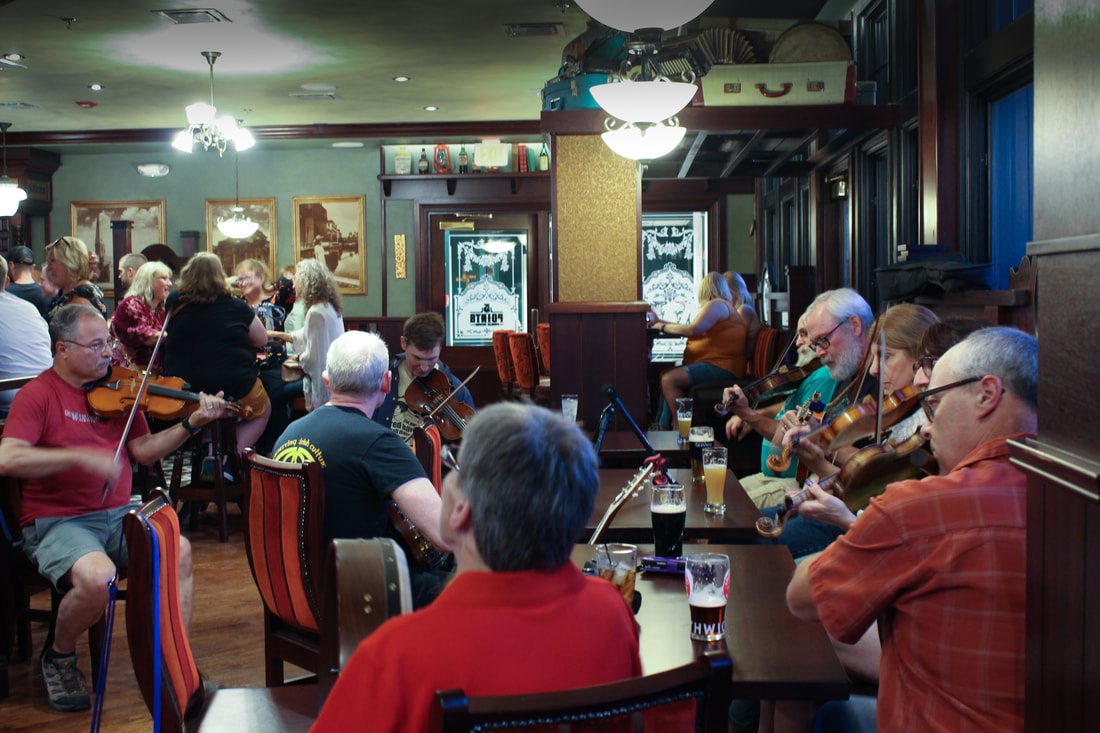
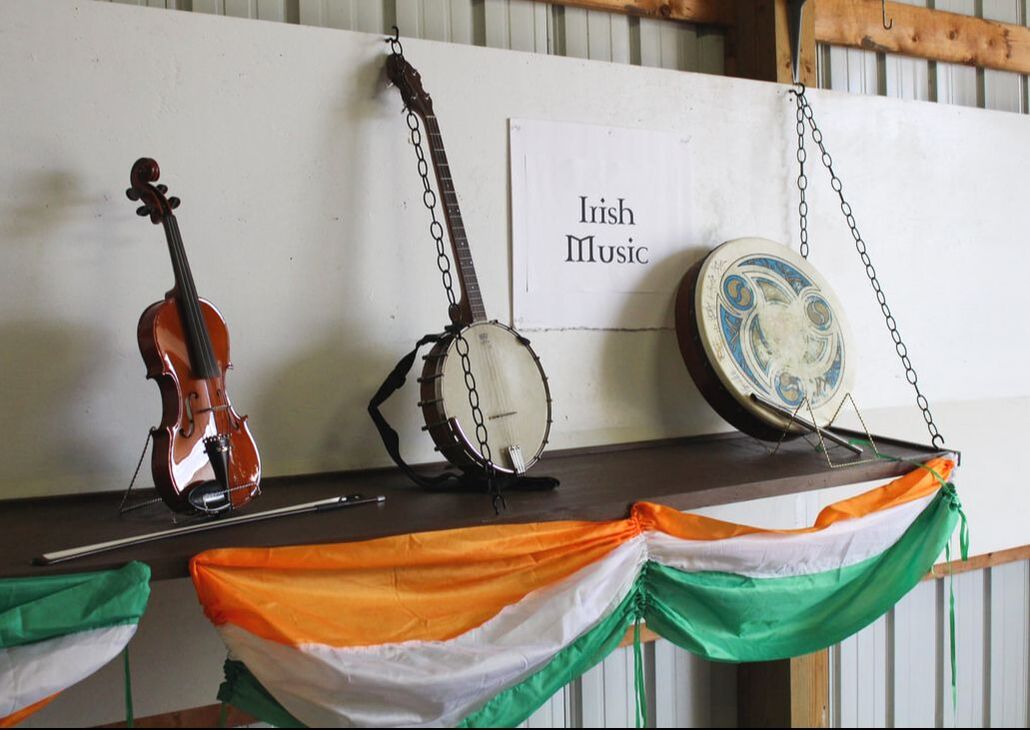
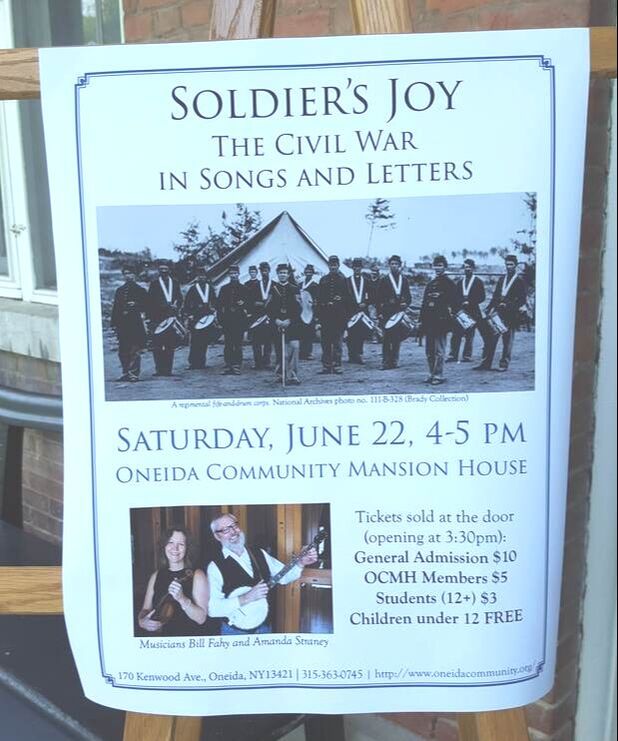
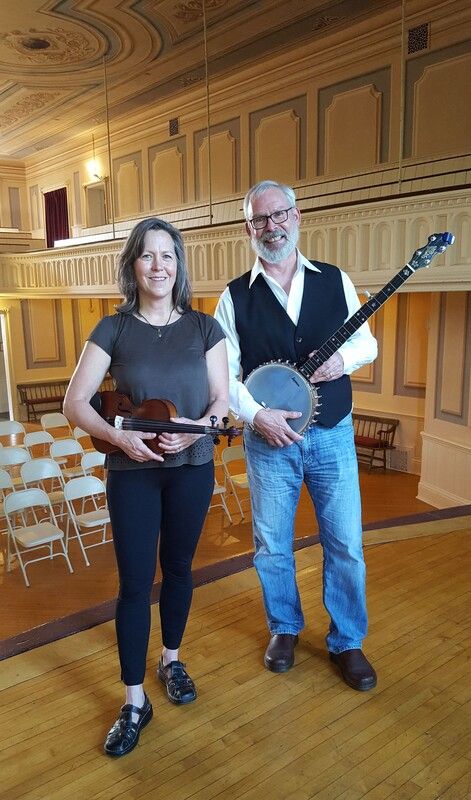
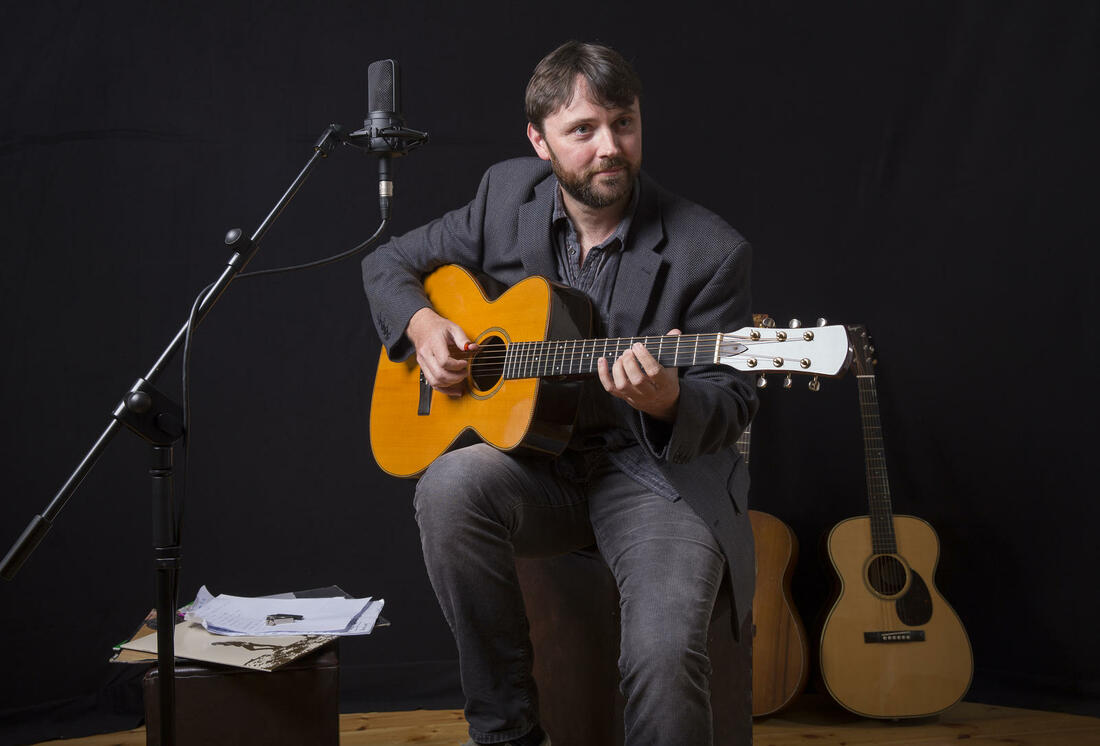
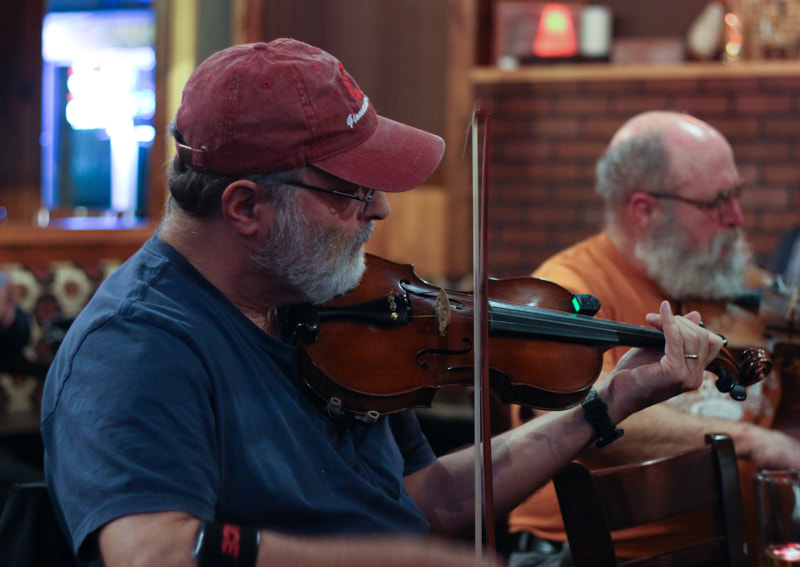
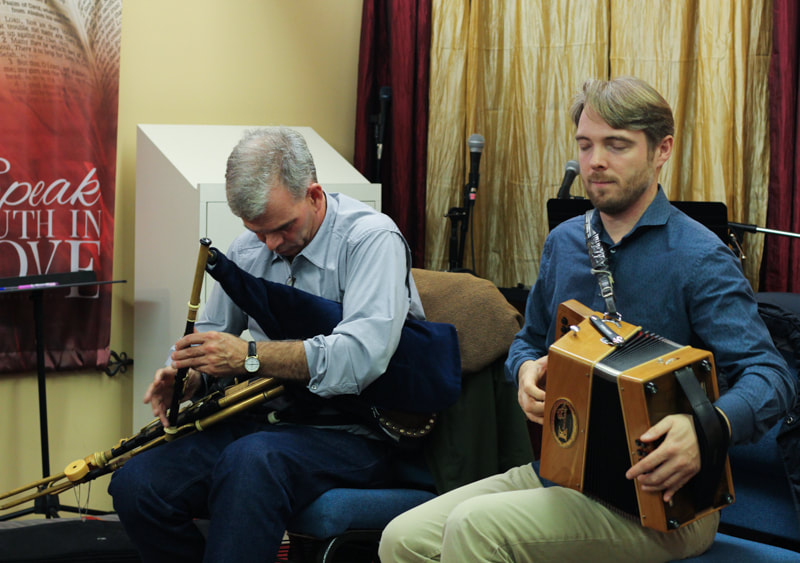
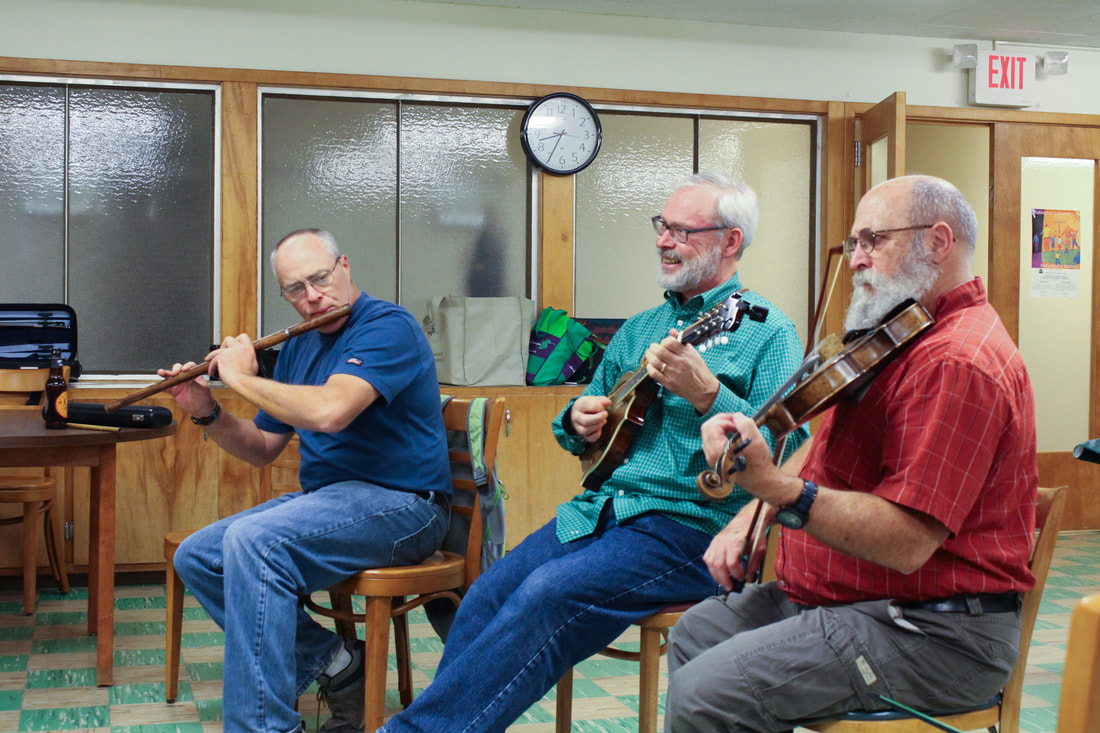
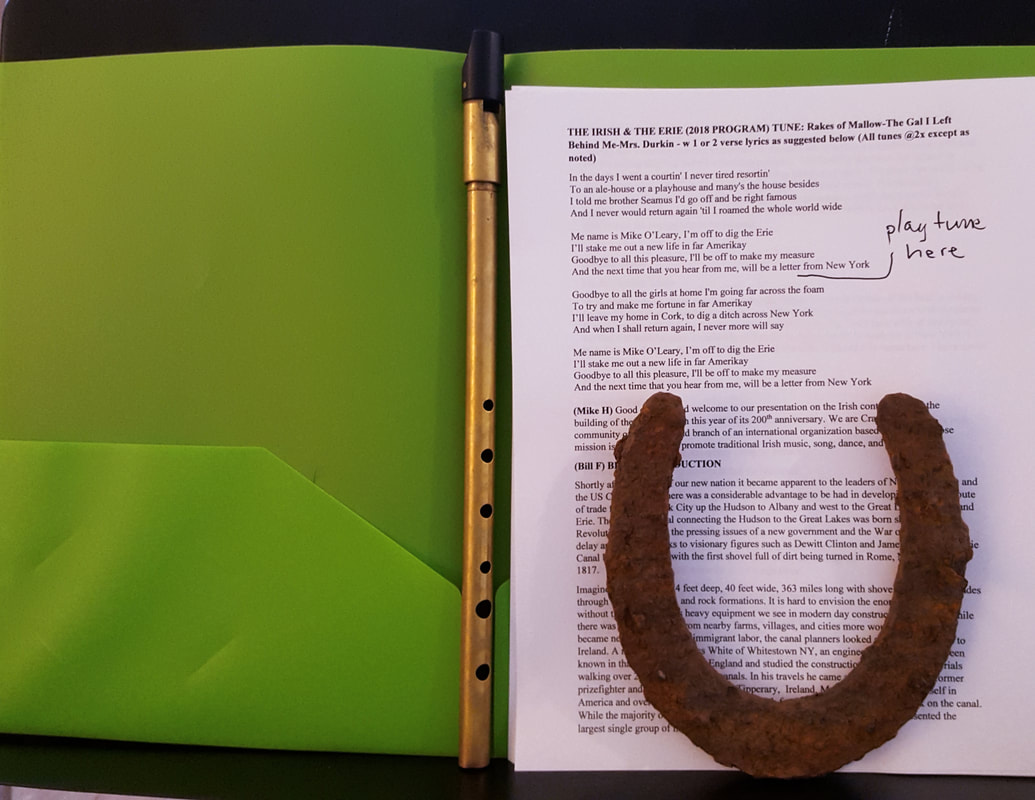
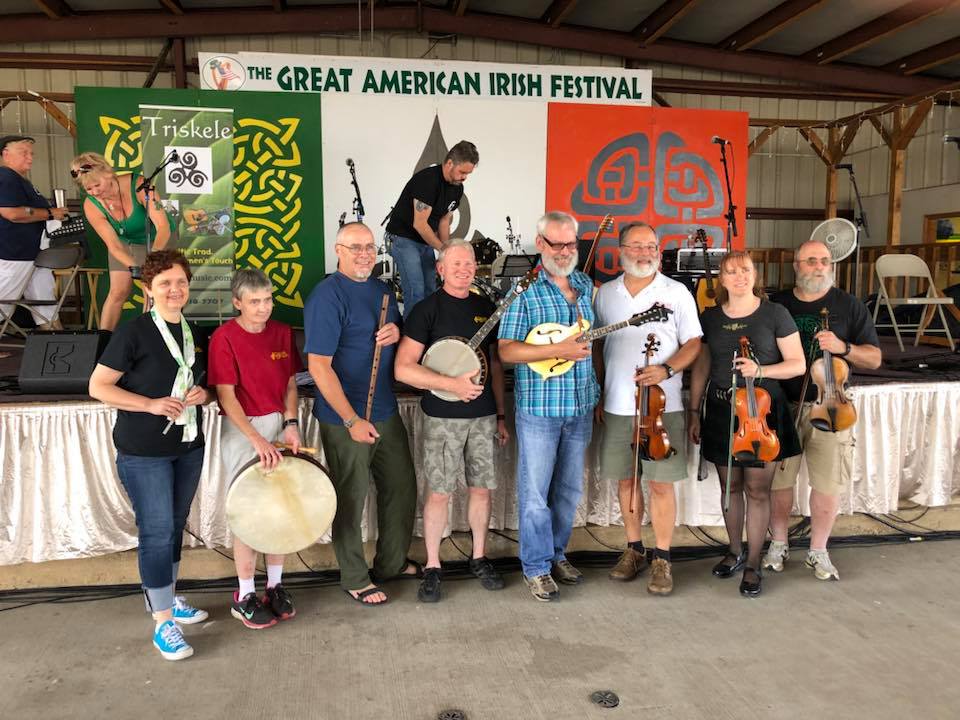
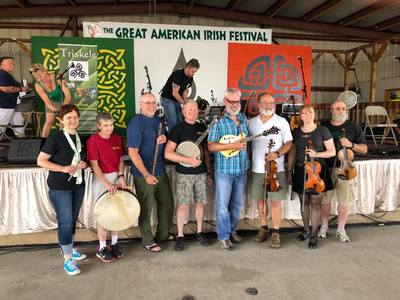
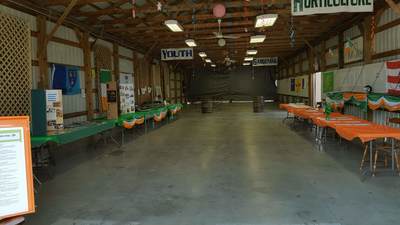
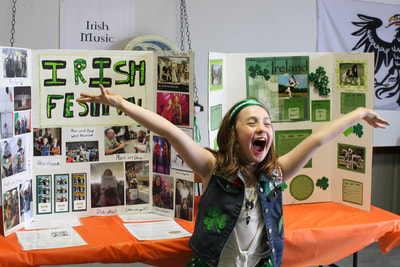
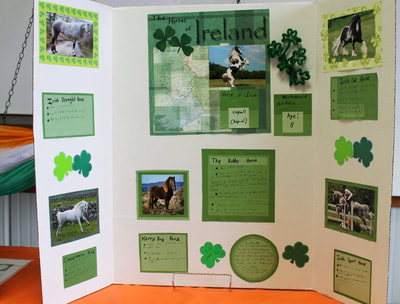
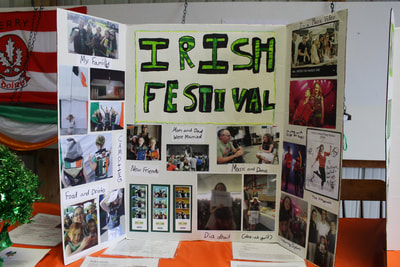
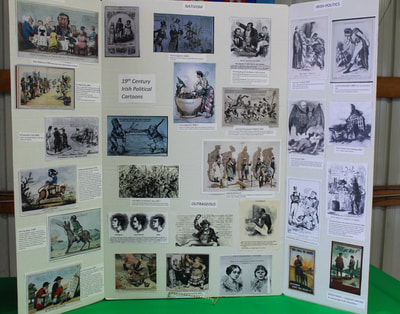
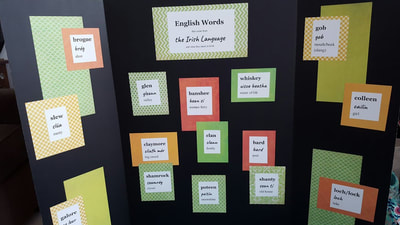
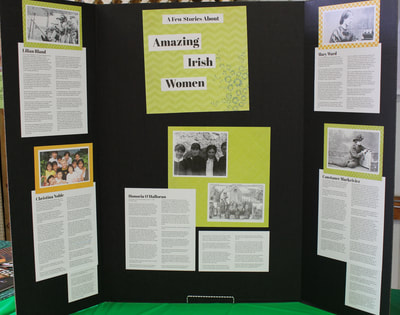
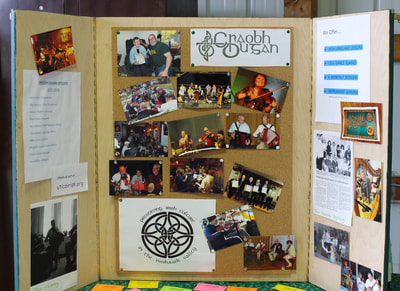
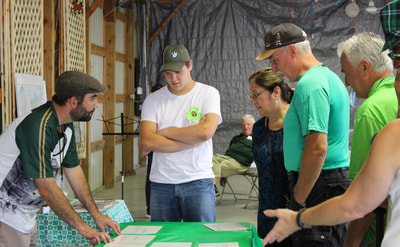
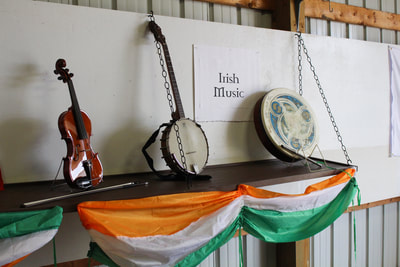
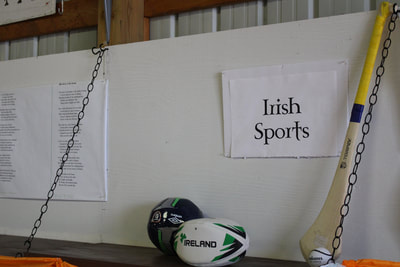
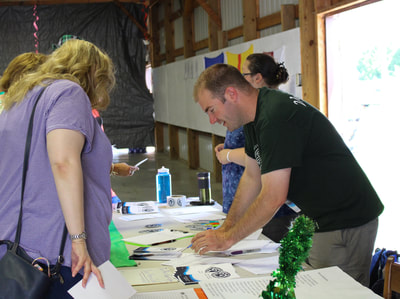
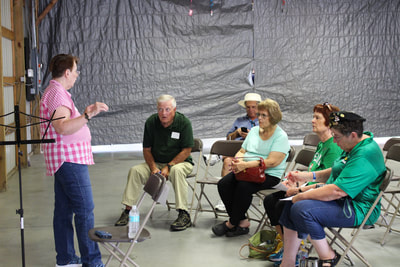
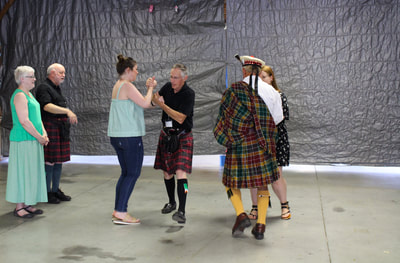
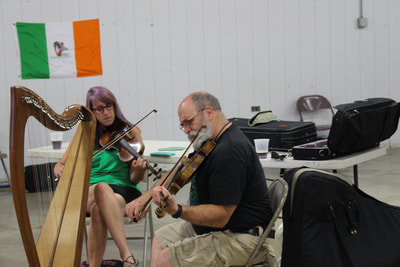
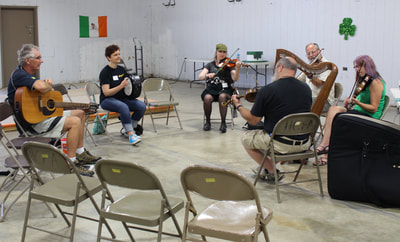
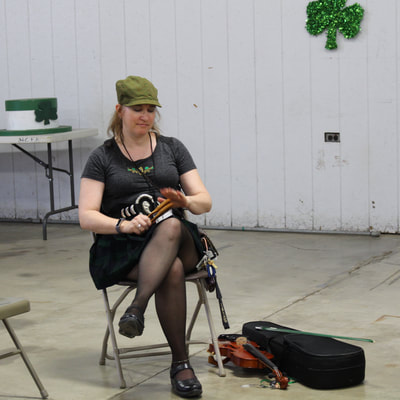
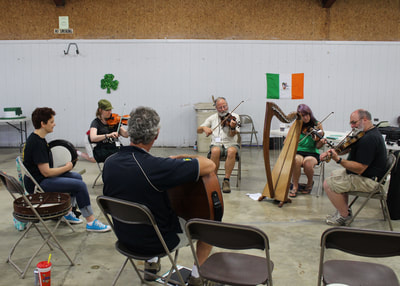
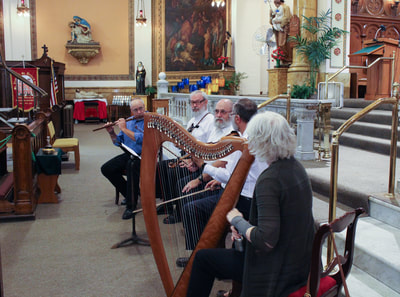
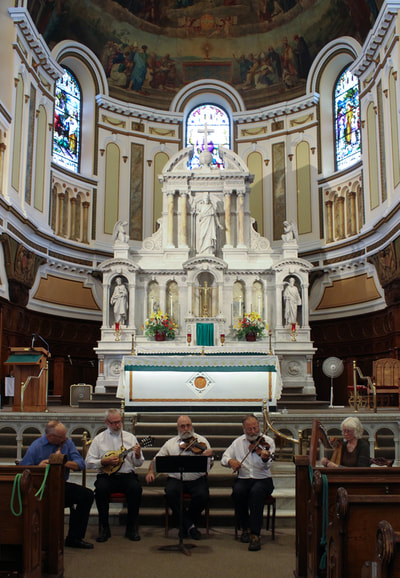
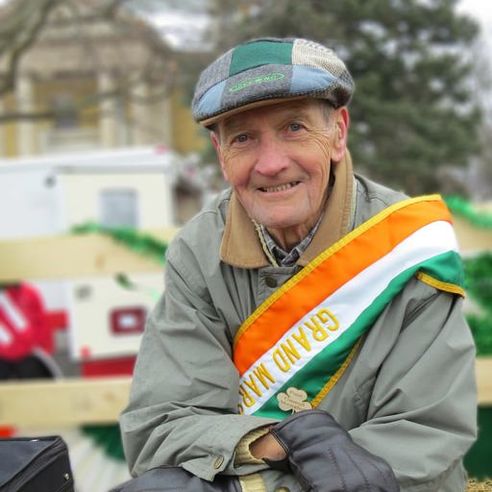
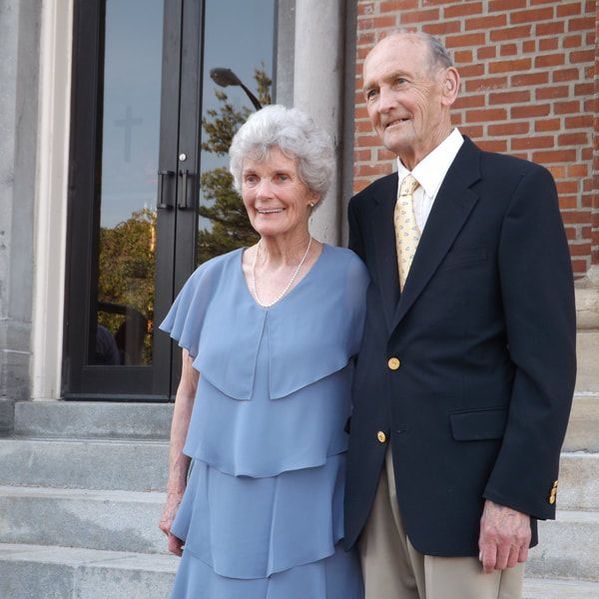
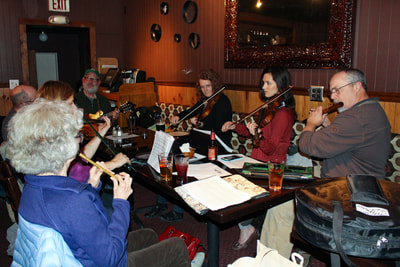
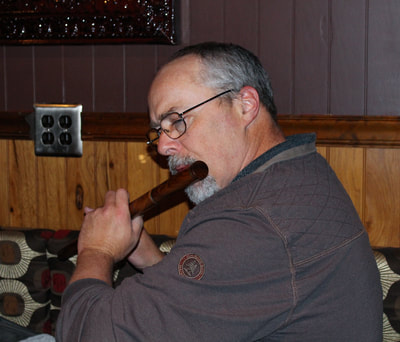
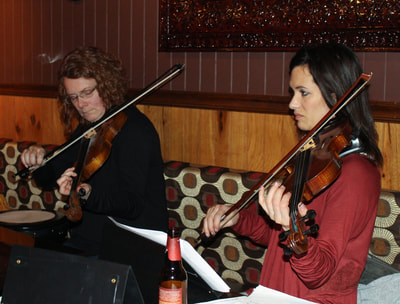
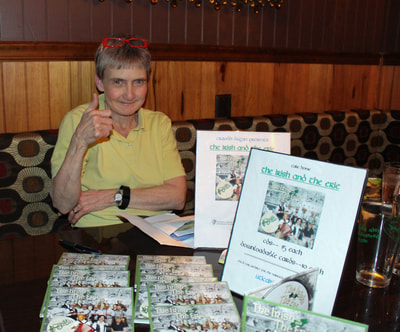
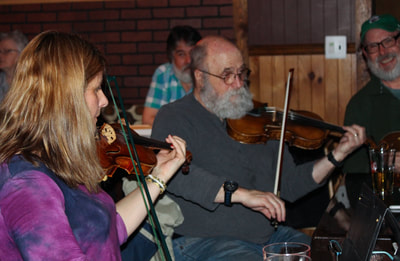
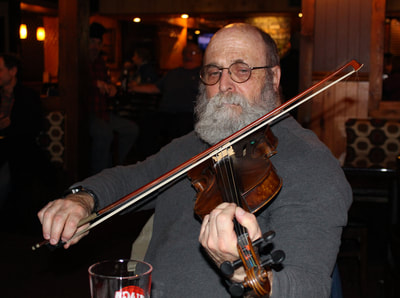
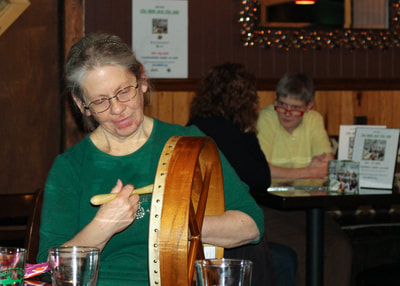
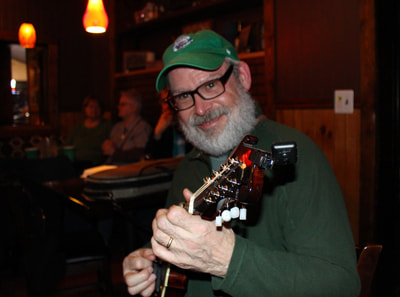
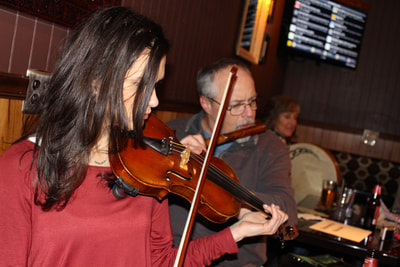
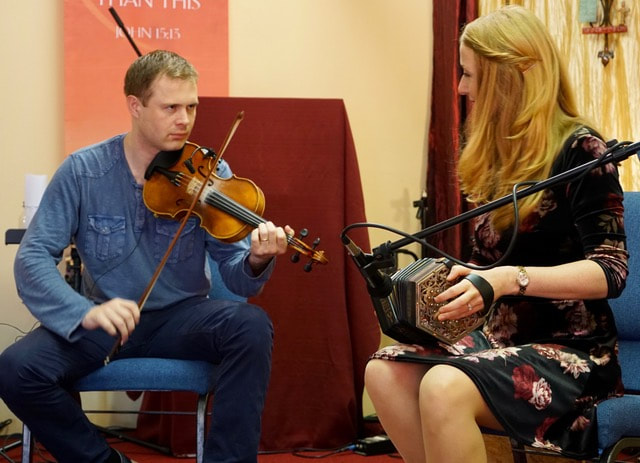
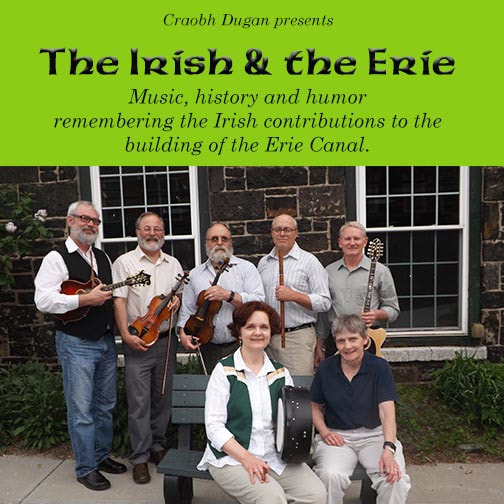
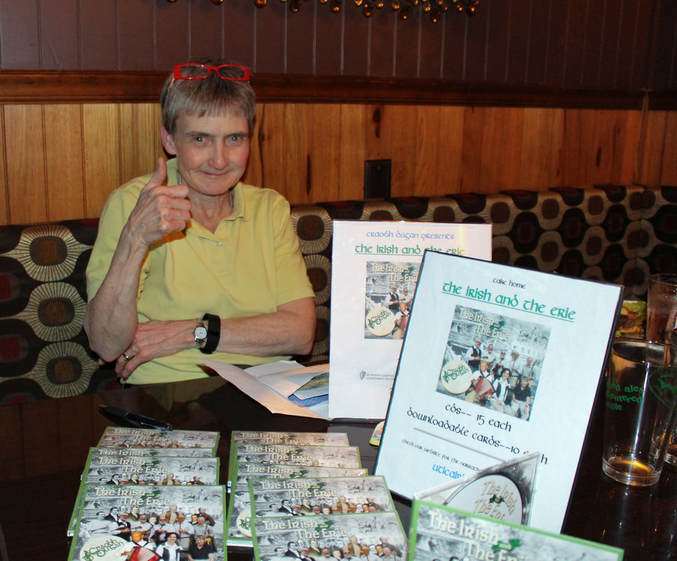
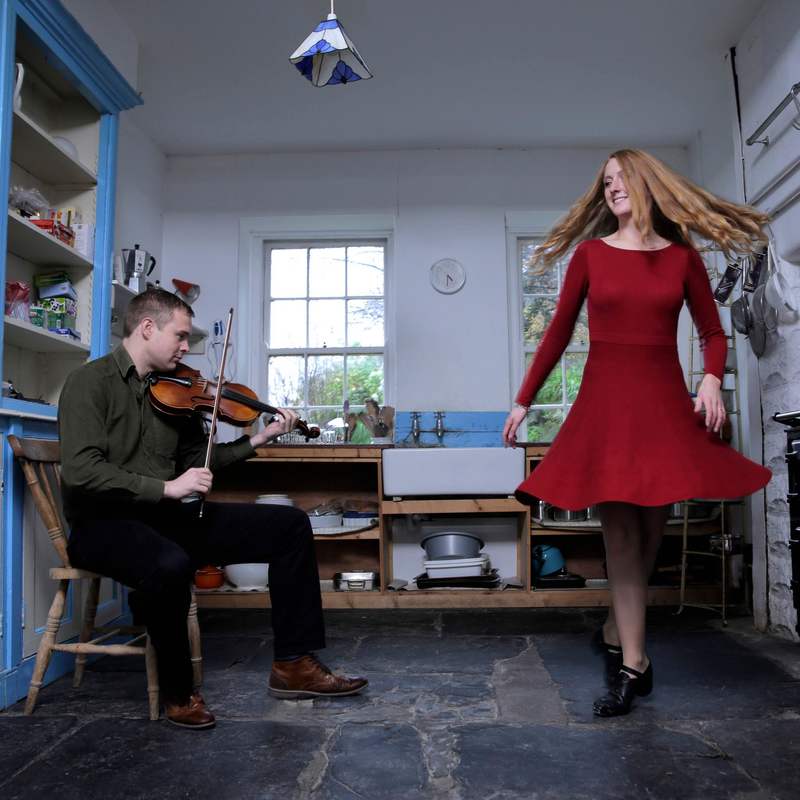
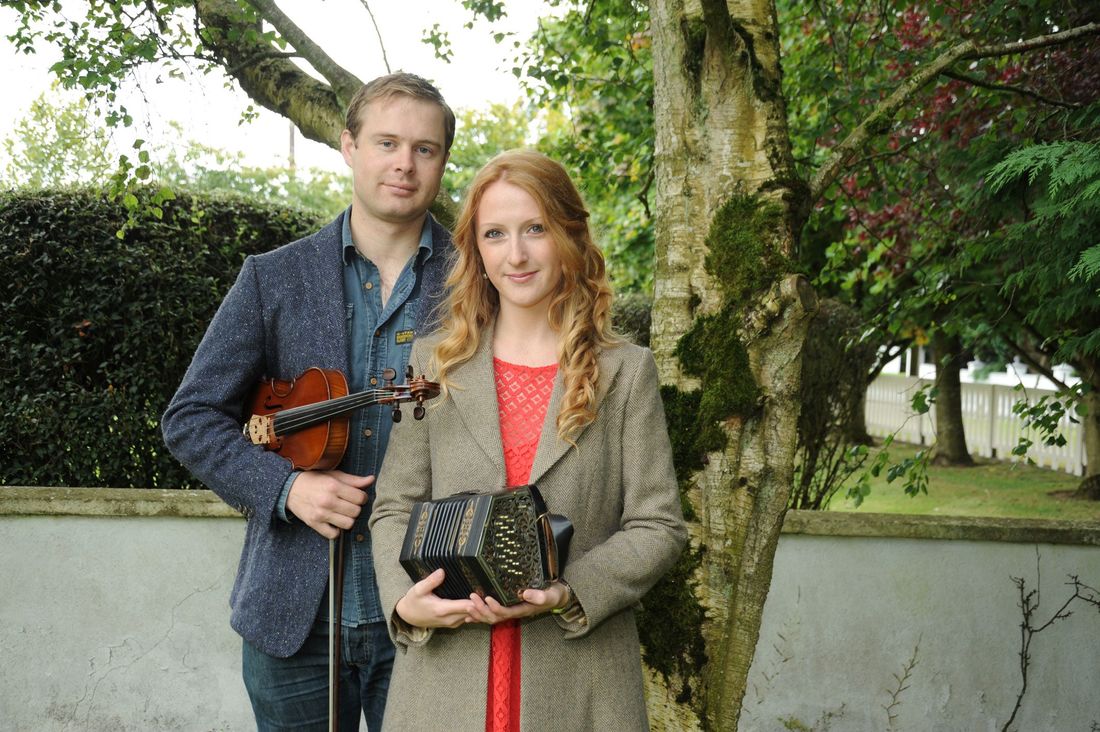
 RSS Feed
RSS Feed